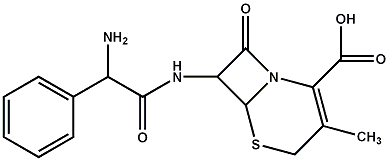MRSA
There is much written these days about resistant bacteria. The lay press has published articles talking about the risk of overuse of antibiotics causing resistant organisms. Sports Illustrated even did a piece on staph infections and athletes. It is a hot topic, and with good reason. Resistant bacteria are here, and they are huge public health problem.
In our hospital we have seen an explosion of the bacteria known as MRSA--"Methicilin Resistant Staphylococcus Aureus." It seems that we have at least one or two patients a week admitted with this diagnosis. Most of the time, the infection is not life threatening and can be effectively treated with the appropriate antibiotics.
Here's a typical story. A toddler, say, is bitten by unidentified insect. The bite itches, and of course, the child scratches. Occasionally the child scratches to such a degree that the skin is broken, causing small lacerations. Some people are naturally colonized with Staphylococcus, particularly in their noses. Colonization means that the bacteria is always present, but doesn't cause any problems.
Since children (and some adults) love to pick their noses, bacteria are easily transferred to the fingers, and then introduced into the small skin lacerations surrounding the insect bite. Soon the bacteria take hold and an infection results.
The child is taken to the doctor where traditional oral antibiotics used to treat skin infections, such as Augmentin or Keflex, are begun. After several days the infection has not only remained stagnant but, in some cases, dramatically worsened.
"Cellulitis," infection of skin and surrounding soft tissues, often results. If further left unchecked, bones and joints in the vicinity of the initial infection may become involved. Bone infections (osteomyelitis) or joint infections (septic arthritis) can be difficult to treat and potential damaging to the involved tissues.
In some cases these are considered medical emergencies. If bones or joints are involved, or if an abscess has formed, surgery is sometimes needed. If surgery is not performed, then strong antibiotics that cover resistant organisms like MRSA must be given.
Years ago, MRSA was seen only in hospitalized and usually debilitated patients. It was a significant problem in nursing homes and other facilities that cared for chronically iii patients. In the last several years this bacteria has worked its way into the larger community. Now, MRSA is so common that children with skin infections which are difficult to treat are considered to be infected with MRSA until proven otherwise.
Recently we cared for a ten year old boy who was prone to skin infections and had been treated for MRSA several times before. There was concern that he had some obscure immune deficiency making him susceptible to such infections. More likely, however, he or a family member was colonized with MRSA, making repeated infections more likely.
He was admitted to our hospital with tenderness below the left knee and was found to have osteomyelitis that required surgical drainage and six weeks of antibiotics. During the early days of his hospitalization, however, he developed tenderness in his right lower leg, where he was found to have a second area of osteomyelitis that also required drainage. The good news was that after surgical intervention and adequate medical care, he was discharged home in excellent condition, and with full use of his legs.
What can a parent do to prevent such infections? First of all, good hygiene is must. This simply means good hand washing with hot water and soap. Antibacterial solutions are not necessary, and, in fact, an argument can be made that they may be contributing to the development of resistant organisms.
When a child develops a skin infection, do not let too much time go by before getting it examined by a physician. Certainly, if signs of spread develop such as redness, red streaking, or severe pain in the area, medical attention should be sought. If a child has high fevers, changes in their activity level, or other signs of widespread infection, they should be seen by a physician as soon as possible. With these simple guidelines in mind, this epidemic of resistant skin infections can be controlled, and hopefully eliminated.
COPYRIGHT 2004 Pediatrics for Parents, Inc.
COPYRIGHT 2005 Gale Group


